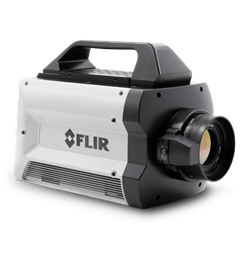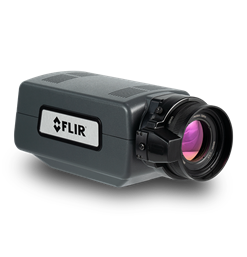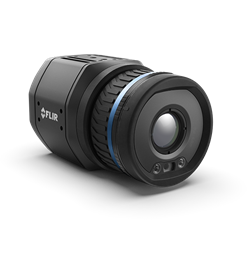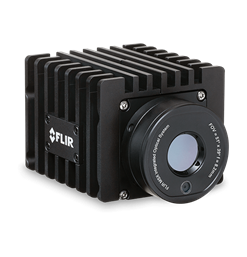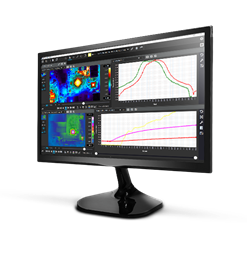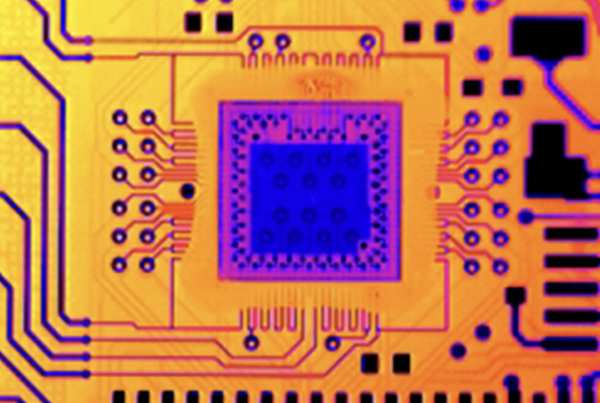FIRST see why understanding detector selection
is so important
Watch to find out more.
Cooled VS Uncooled
Thermal Imaging
For many years, thermal imaging cameras have been used by scientists, researchers and R&D specialists for a wide range of applications, including industrial R&D, academics & research, non-destructive testing (NDT) & materials testing, and defense and aerospace. However, not all thermal cameras are created equal and for some applications dedicated, advanced thermal cameras with high speed stop motion capability are required in order to get accurate measurements.
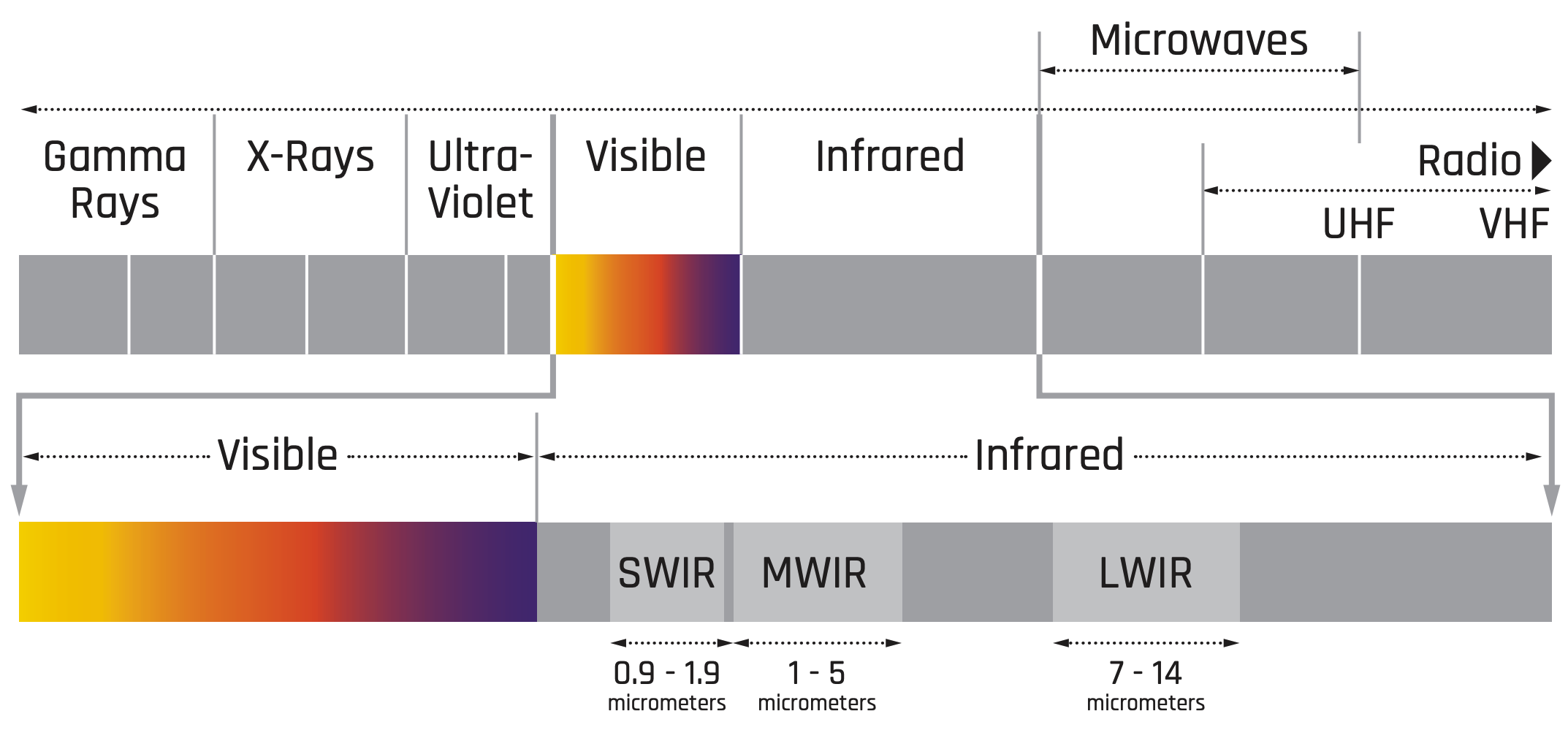
When specifying a camera its very important for us to understand fully your spectral requirements to ensure correct detector selection.
Thermal imaging cameras for Science / R&D applications are powerful and non-invasive tools. With a thermal imaging camera you can identify problems early in the design cycle, allowing them to be documented and corrected before becoming more serious and more costly to repair.
There is plenty of choice when it comes to thermal imaging camera systems for R&D/science applications. An often asked question is therefore: “Should I use a cooled or an uncooled thermal imaging system and which one is the most cost effective?” In fact, there are two classes of thermal imaging camera systems available on the market today: cooled and uncooled systems. The component costs for these two classes of systems can be quite different, making it extremely important to decide which way to go.
We are always here to help so contact us anytime T: 03332004667 E: info@thermalvisionresearch.co.uk
Section No. 2
Cooled Photon Detectors
A modern cooled thermal imaging camera has an imaging sensor that is integrated with a cryocooler.
This is a device that lowers the sensor temperature to cryogenic temperatures. This reduction in sensor temperature is necessary to reduce thermally-induced noise to a level below that of the signal from the scene being imaged.
Cooled thermal imaging cameras are the most sensitive type of cameras and can detect the smallest of temperature differences between objects. They can be produced to image in the mid-wave infrared (MWIR) band and the long-wave infrared (LWIR) band of the spectrum where the thermal contrast is high due to blackbody physics. Thermal contrast is the change in signal for a change in target temperature. The higher the thermal contrast, the easier it is to detect objects against a background that may not be much colder or hotter than the object.
We are always here to help so contact us anytime T: 03332004667 E: info@thermalvisionresearch.co.uk
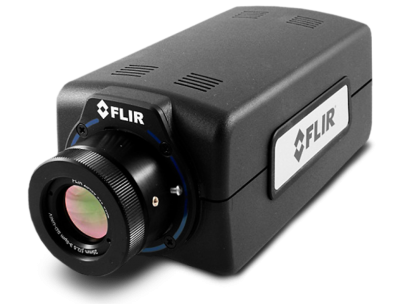
I am text block. Click edit button to change this text. Lorem ipsum dolor sit amet, consectetur adipiscing elit. Ut elit tellus, luctus nec ullamcorper mattis, pulvinar dapibus leo.
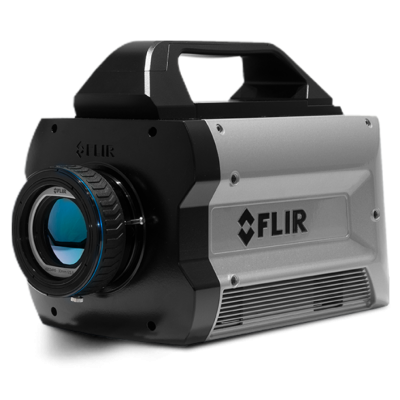
I am text block. Click edit button to change this text. Lorem ipsum dolor sit amet, consectetur adipiscing elit. Ut elit tellus, luctus nec ullamcorper mattis, pulvinar dapibus leo.
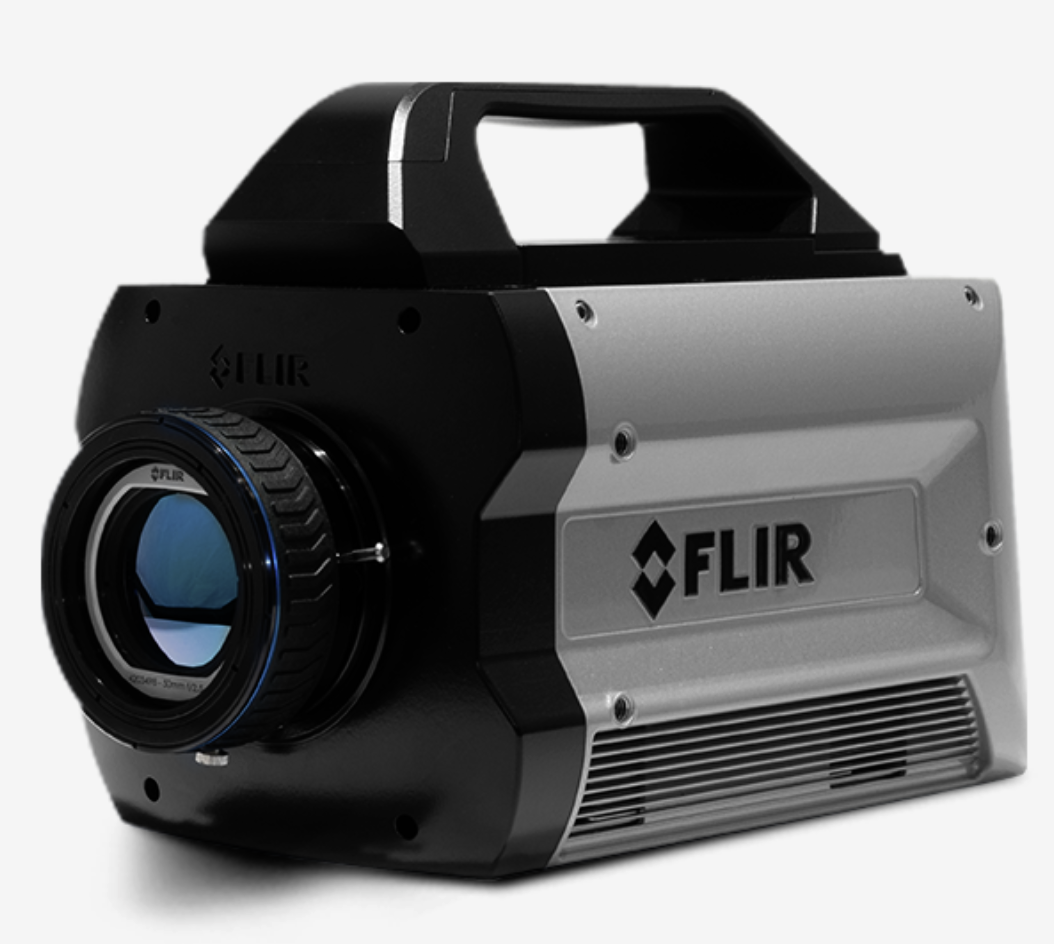
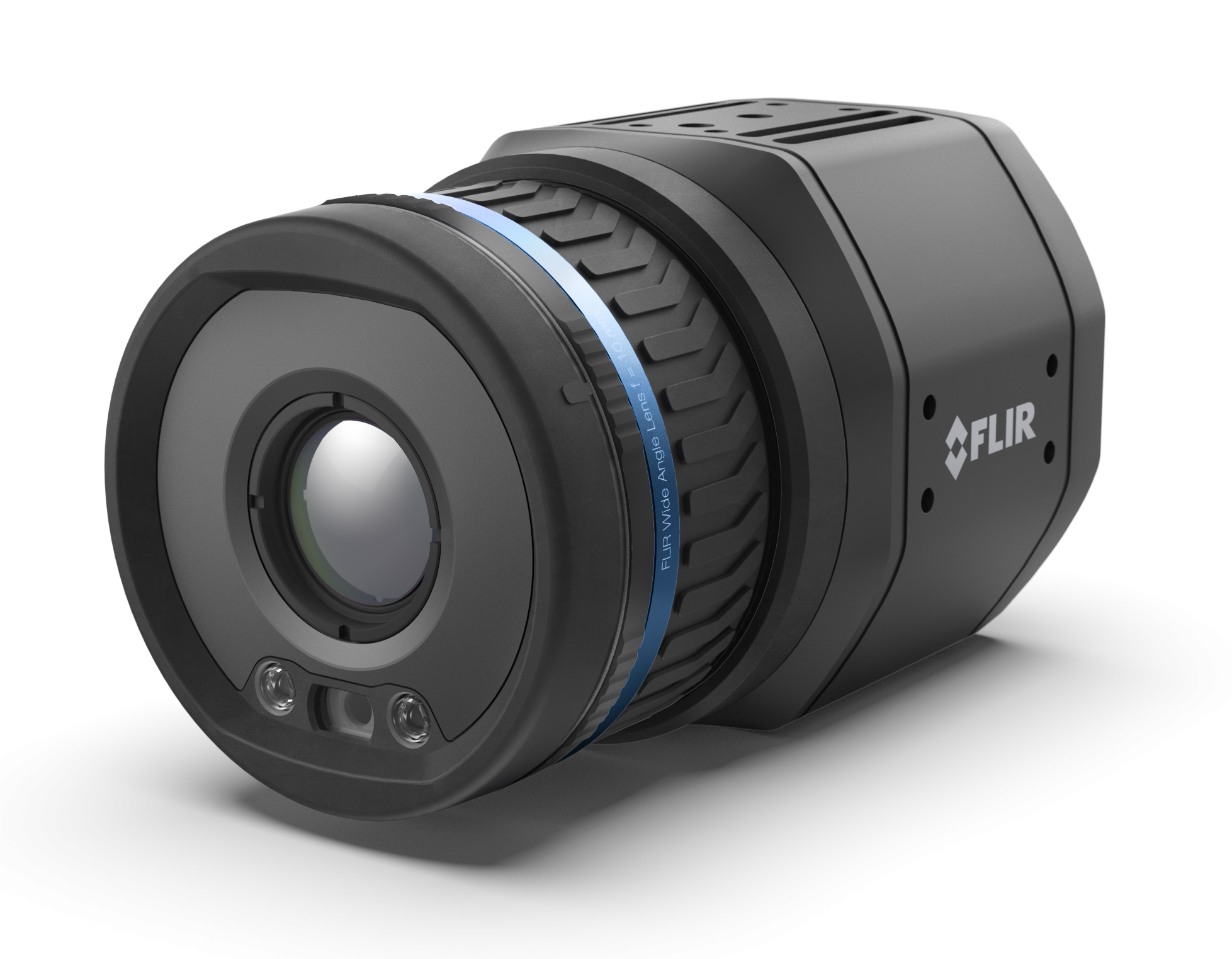
Section No. 1
UnCooled Microbolometer Systems
An uncooled infrared camera is one in which the imaging sensor does not require cryogenic cooling. A common detector design is based on the microbolometer, a tiny vanadium oxide resistor with a large temperature coefficient on a silicon element with large surface area, low heat capacity and good thermal isolation. Changes in scene temperature cause changes in the bolometer temperature which are converted to electrical signals and processed into an image. Uncooled sensors are designed to work in the Longwave infrared (LWIR) band, where terrestrial temperature targets emit most of their infrared energy. Uncooled cameras are generally much less expensive than cooled infrared cameras. The sensors can be manufactured in fewer steps with higher yields relative to cooled sensors, less expensive vacuum packaging, and uncooled cameras do not require cryocoolers, which are very costly devices. Uncooled cameras have fewer moving parts and tend to have much longer service lives than cooled cameras under similar operating conditions.
We are always here to help so contact us anytime T: 03332004667 E: info@thermalvisionresearch.co.uk
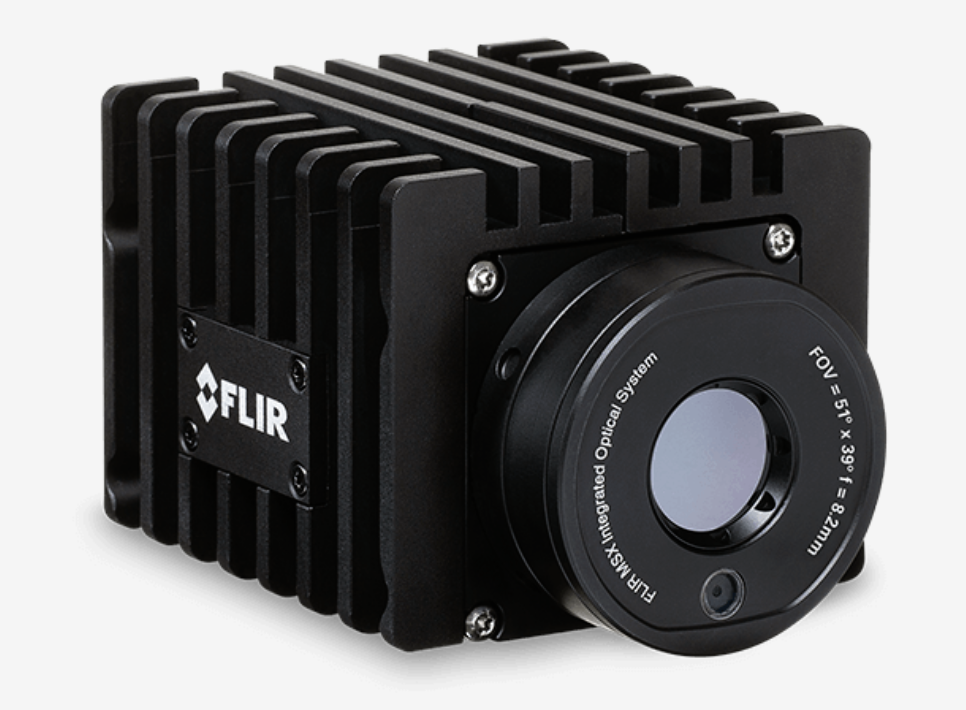
I am text block. Click edit button to change this text. Lorem ipsum dolor sit amet, consectetur adipiscing elit. Ut elit tellus, luctus nec ullamcorper mattis, pulvinar dapibus leo.

I am text block. Click edit button to change this text. Lorem ipsum dolor sit amet, consectetur adipiscing elit. Ut elit tellus, luctus nec ullamcorper mattis, pulvinar dapibus leo.
Section No. 3
Speed and frame rate
1Hz 30Hz 1000Hz how fast do you need
Cooled cameras have much higher imaging speeds than uncooled ones. High-speed thermal imaging allows microsecond exposure times that stop the apparent motion of dynamic scenes and permit capturing frame rates exceeding 29,000 frames per second. Applications include thermal and dynamic analysis of jet engine turbine blades, automotive tire or airbag inspection, supersonic projectiles, and explosions to name a few. Cooled cameras have very fast response times and they make use of a global shutter.
This means that they will read out all pixels at the same time, as opposed to reading them out line by line, which is the case with uncooled cameras. This allows cooled cameras to capture images and take measurements on moving objects without image blurring.
The IR images in opposite compare the capture results of a car travelling at 70mph. The lower image was taken with a cooled thermal imaging camera. One would think the tire is not spinning, but this is the result of a very fast capture rate of the cooled camera that has stopped the motion of the tire. The uncooled camera capture rate is simply too slow to capture the rotating tire causing the wheel spokes to appear transparent and blurred (see upper image). You cannot accurately measure temperature on blurred images.
A video from FLIR x6900sc into the field to look at firearm mechanics, how body armor reacts to bullets, and catching a bullet in flight! The FLIR x6900sc is one of our highest frame rate thermal imaging cameras.
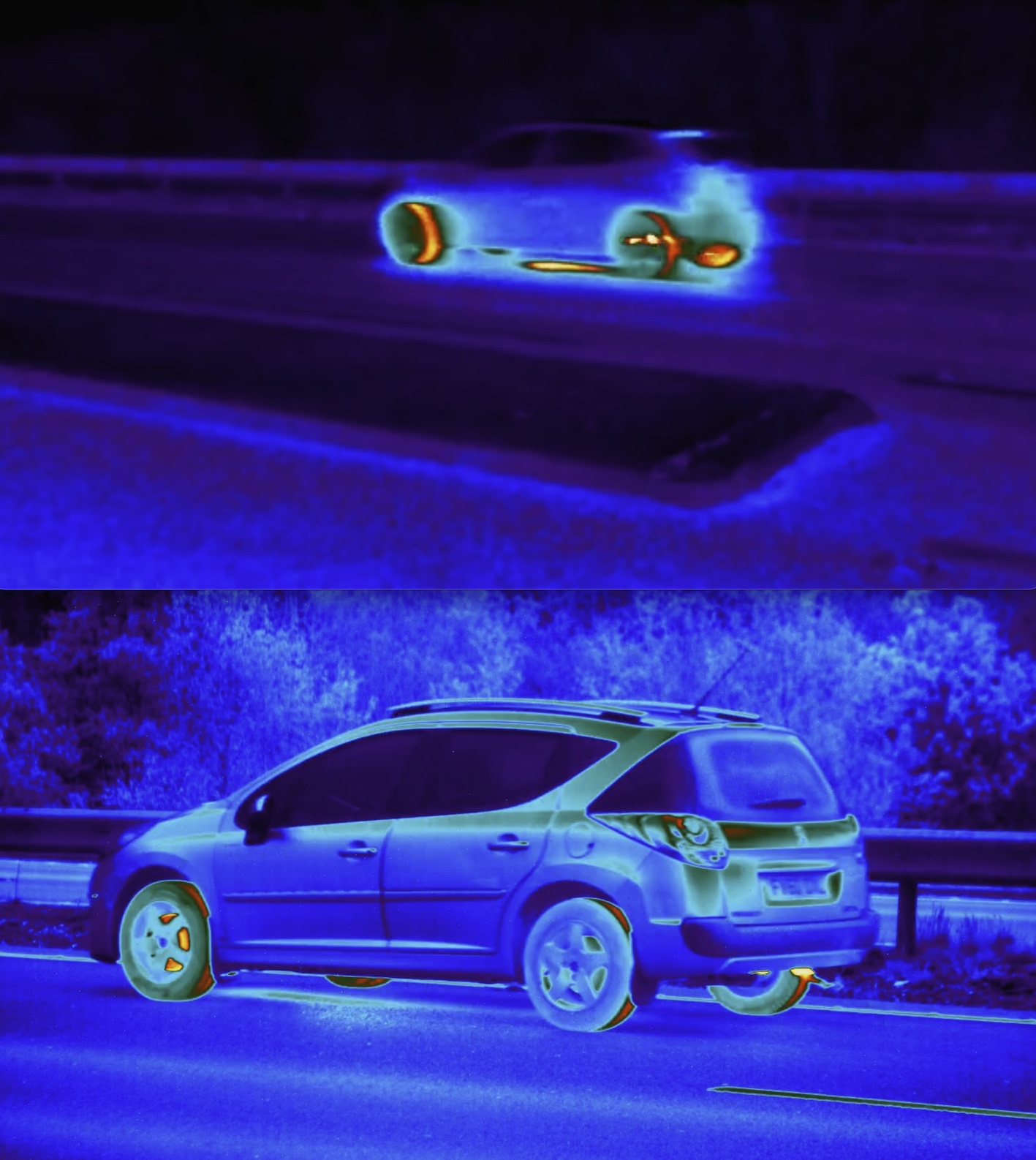
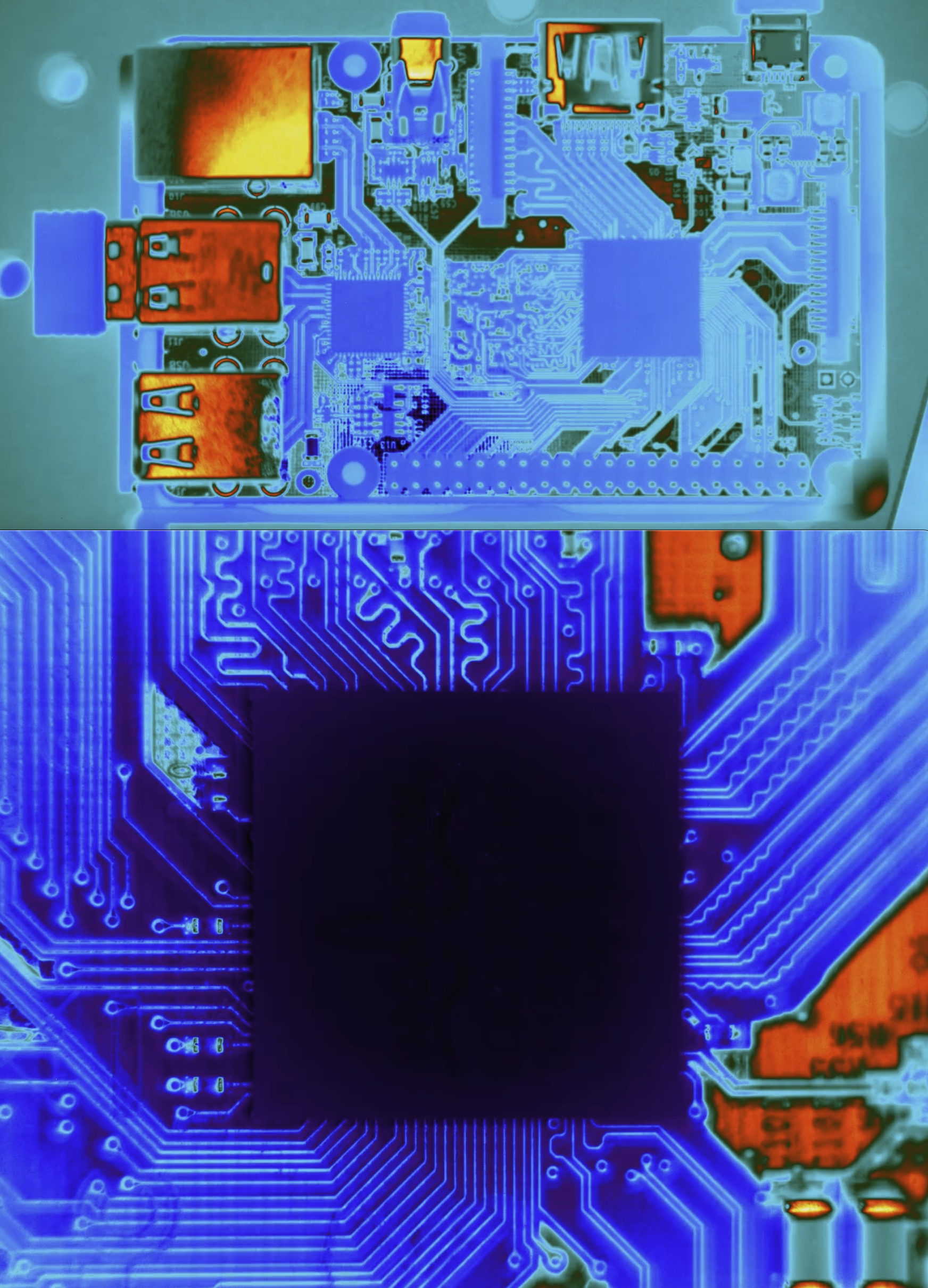
What we see
Spatial Resolution
Cooled cameras typically have greater magnification capabilities than uncooled cameras, because they sense shorter infrared wavelengths. Because cooled cameras have greater sensitivity characteristics, lenses with more optical elements or thicker elements can be used without degrading the signal to noise ratio, allowing for better magnification performance. The thermal images in Figure 2 compare the best close-up magnification that can be achieved with a cooled and uncooled camera system. The image on the left was taken with a 4× close-up lens and 15μm pitch cooled camera combination resulting in a 3.5μm spot size. The image on the right was taken with a 1× close-up lens and 25μm pitch uncooled sensor resulting in a 25μm spot size.
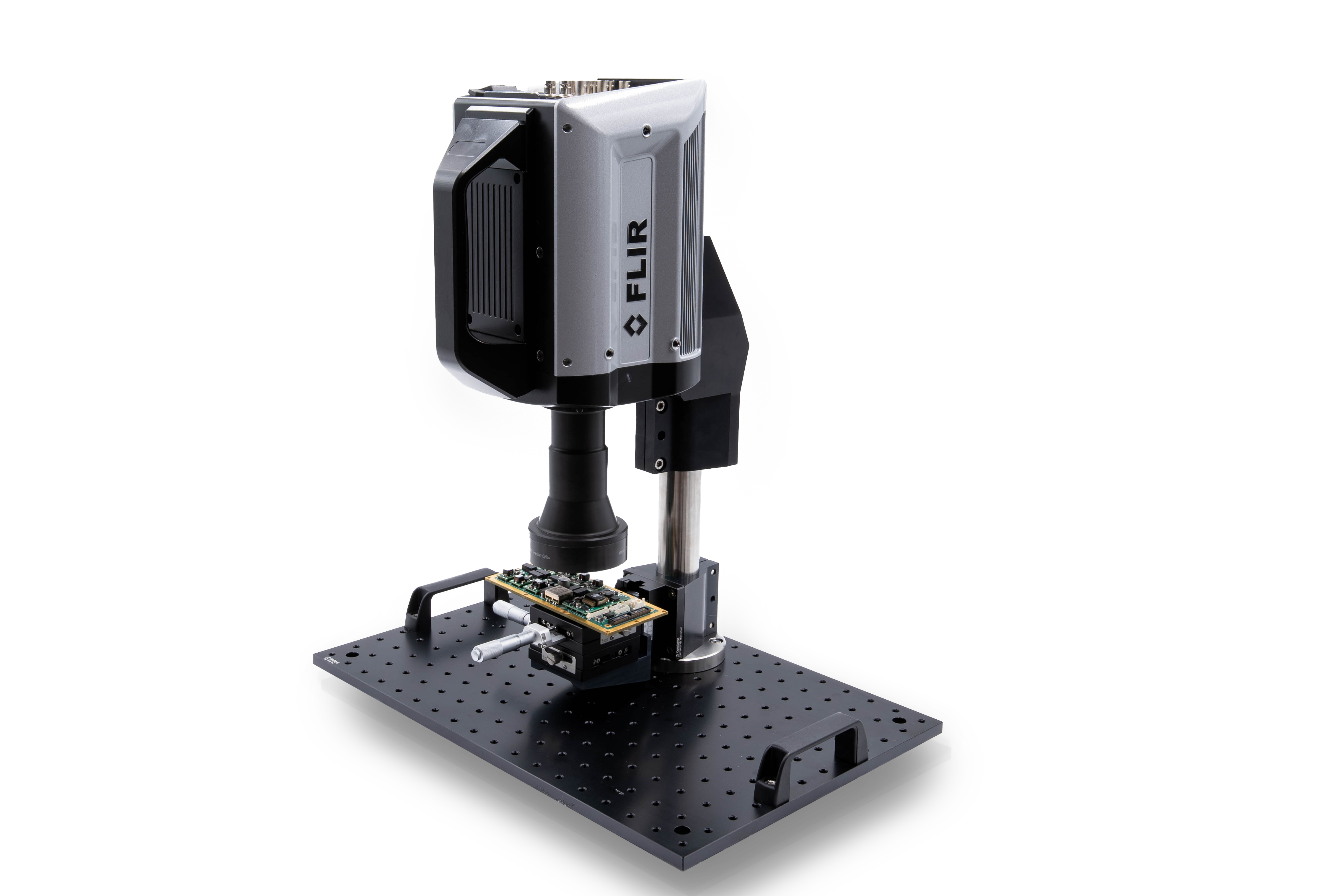
Image shows the X8500 with 3x closeup lens giving 5micron per pixel resolution.
Sensitivity
how much detail do you need?
It is often difficult to fully appreciate the value offered by the improved sensitivity of cooled thermal cameras. How do you get a feeling of the benefit from a 50mK sensitivity uncooled thermal camera in comparison to a 20mK sensitivity cooled thermal camera?
To help illustrate this benefit we ran a quick sensitivity experiment (See Figure 3). For this comparison we put our hand on a wall for a brief few seconds to create a thermal handprint. The first two images show the handprint immediately after the hand was removed. And the second set of images shows the thermal handprint’s signature after two minutes.
The cooled camera can still see most of the thermal signature of the handprint, whereas the uncooled cameras only show the partial remains of the handprint. The cooled camera clearly can detect smaller temperature differences and for longer durations than the uncooled camera. This means the cooled camera will provide better detail on your target and help you detect even the faintest of thermal anomalies.
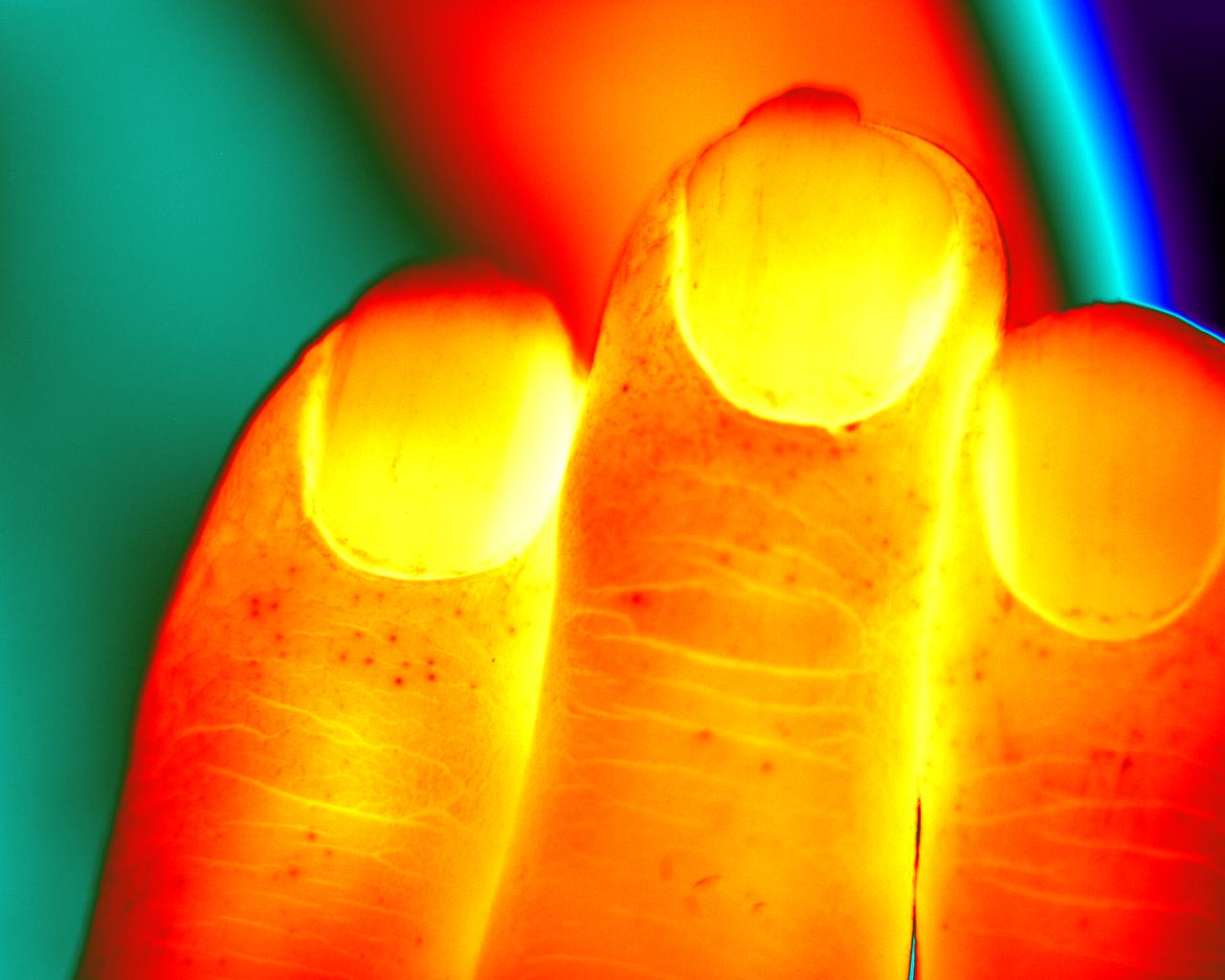
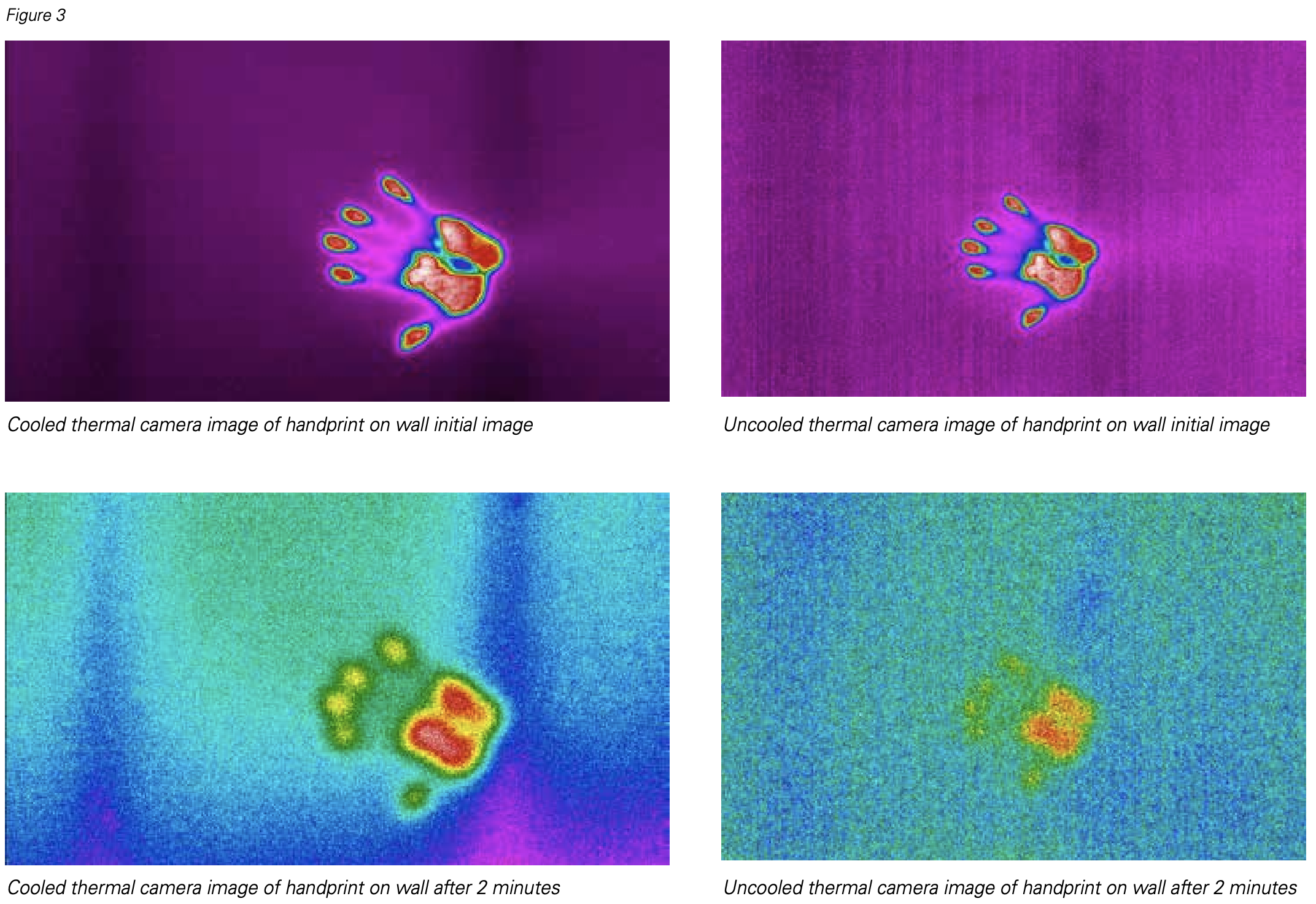
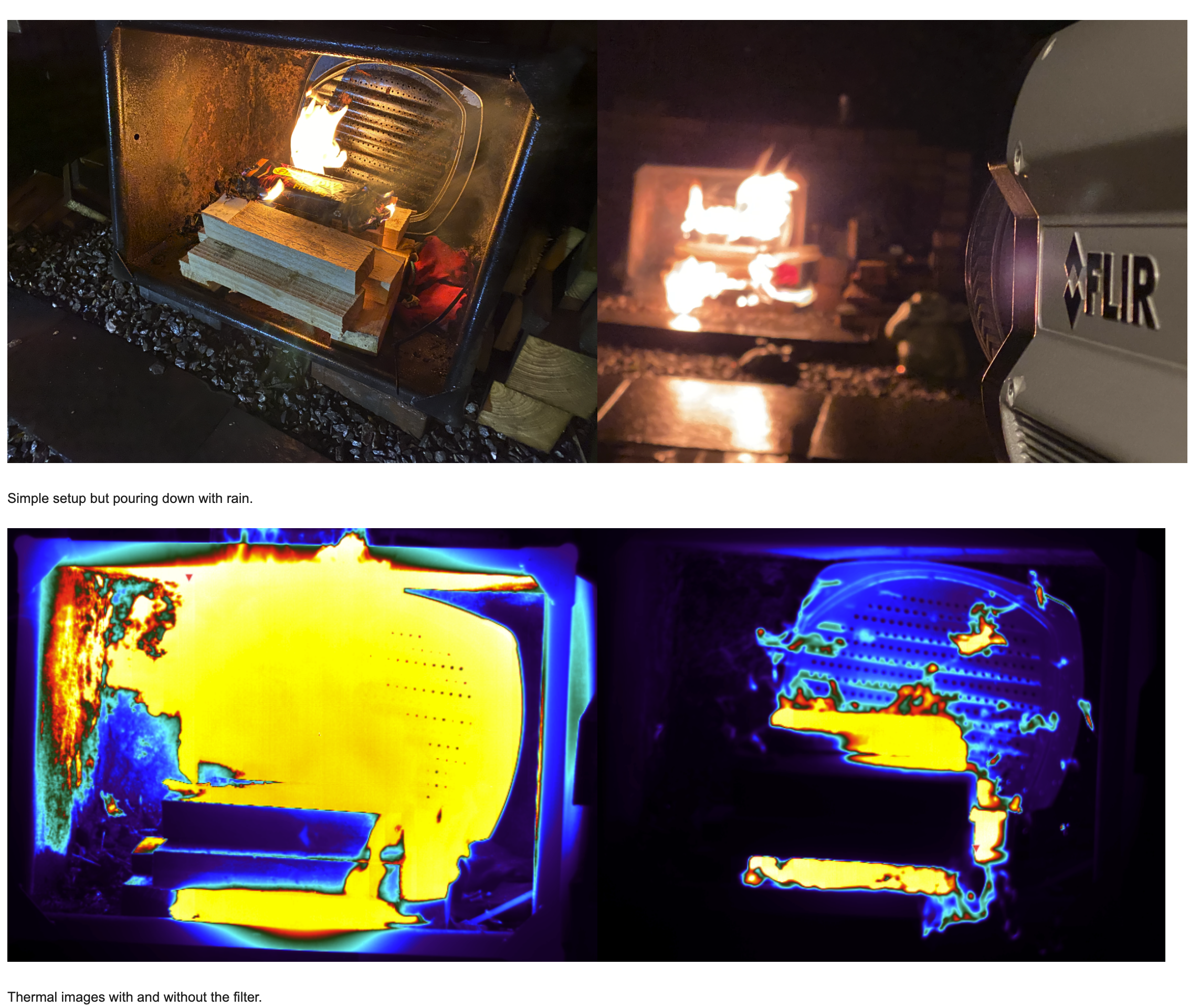
Spectral filtering
what would or wouldn't you like to see?
One of the great advantages of cooled thermal cameras is the ability to easily perform spectral filtering in order to uncover details and take measurements that otherwise would be unachievable with uncooled thermal cameras. In the first example shown in Figure 4, we are using a spectral filter, either placed in a filter holder behind the lens or built into the dewar detector assembly, in order to image through flame. The end user wanted to measure and characterize the combustion of coal particles within a flame. Using a “see through flame” spectral infrared filter, we filtered the cooled camera to a spectral waveband where the flame was transmissive and therefore we were able to image the coal particle combustion. The first image is without the flame filter and all we see is the flame itself. The second is with the flame filter and we can clearly see the combustion of coal particles.
Sync or Trigger
Start Stop how and when...
Precise camera synchronization and triggering makes the cameras ideal for high-speed, high sensitivity applications. Working in snapshot mode the FLIR A6750sc is able to register all pixels from a thermal event simultaneously. This is particularly important when monitoring fast moving objects where a standard uncooled thermal infrared camera would suffer from image blur. The images in Figure 5 are a good example. In this example, we dropped a coin and had a sensor trigger the camera to take an image. Two drops of the same coin triggered the camera at the same time, giving you the object in the same position each time as well. With an uncooled microbolometer camera, you would not catch the coin at all due to the inability to trigger that type of detector and if you did by luck it would be blurred.
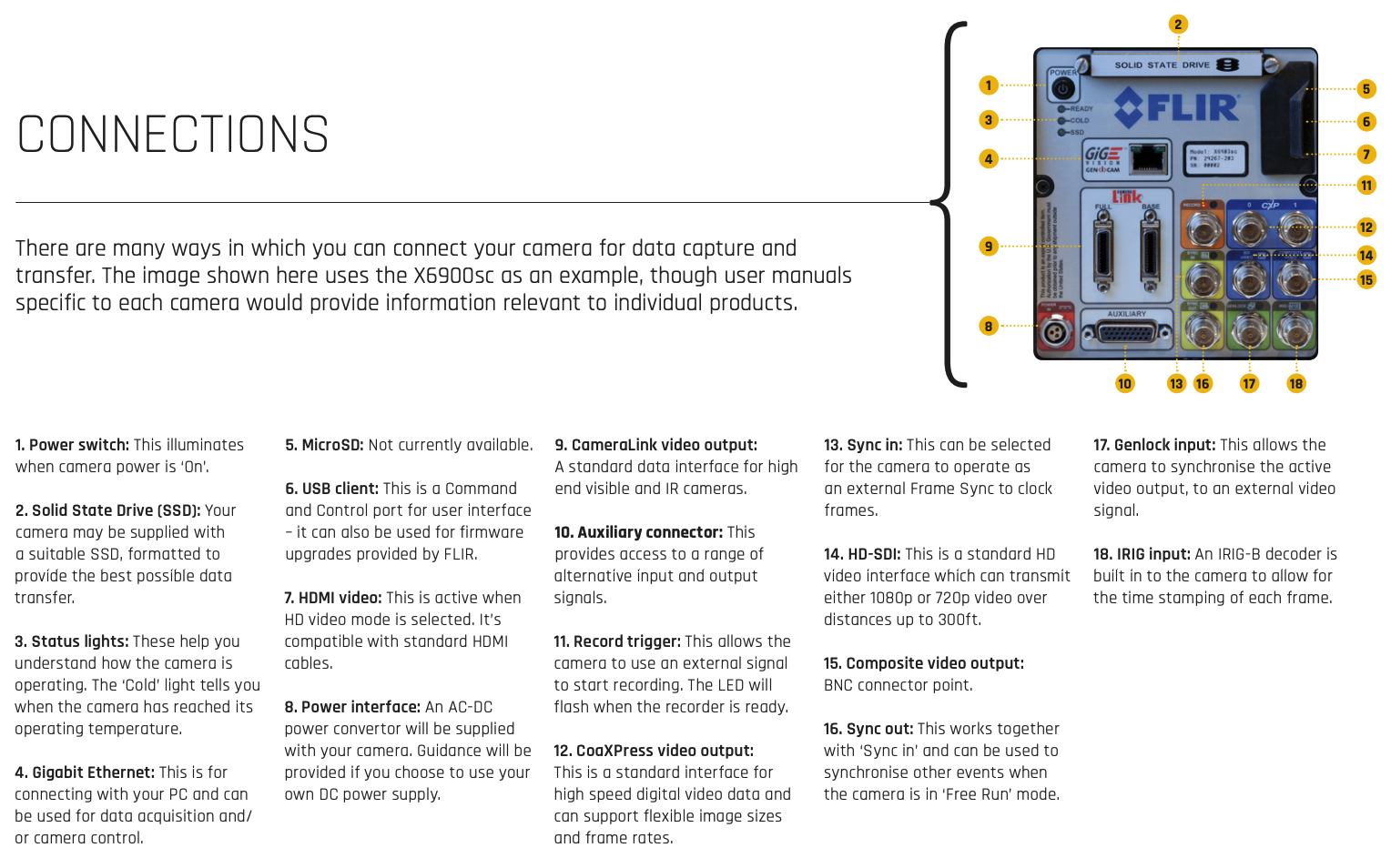
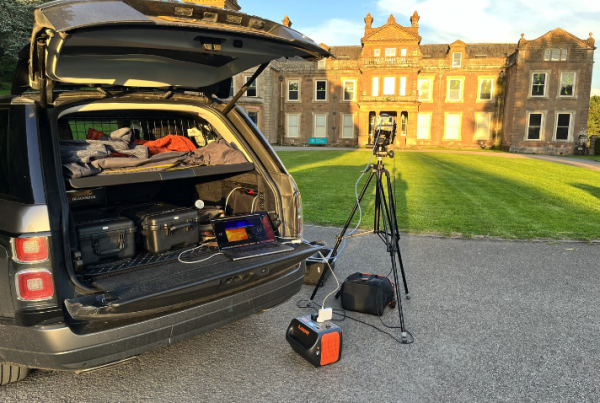 @ Evenings onsite filming bats I am raw html block.Click edit button to change this html Click here to download the article
@ Evenings onsite filming bats I am raw html block.Click edit button to change this html Click here to download the article
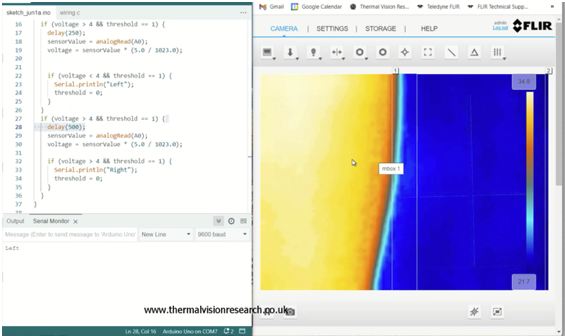 How to virtually increase the number of digital outputs on a FLIR AX8 thermal camera Application A customer using an AX8 wanted to trigger on the digital output if either...
How to virtually increase the number of digital outputs on a FLIR AX8 thermal camera Application A customer using an AX8 wanted to trigger on the digital output if either...
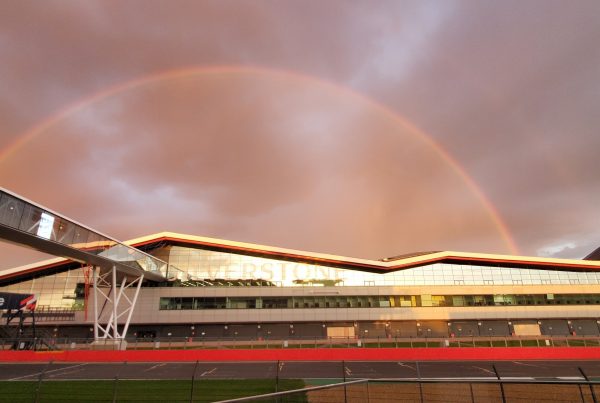
TVR June Newsletter Hello everyone and welcome to our June newsletter! We hope you have been enjoying the lovely weather over the bank holiday. We have had a…


